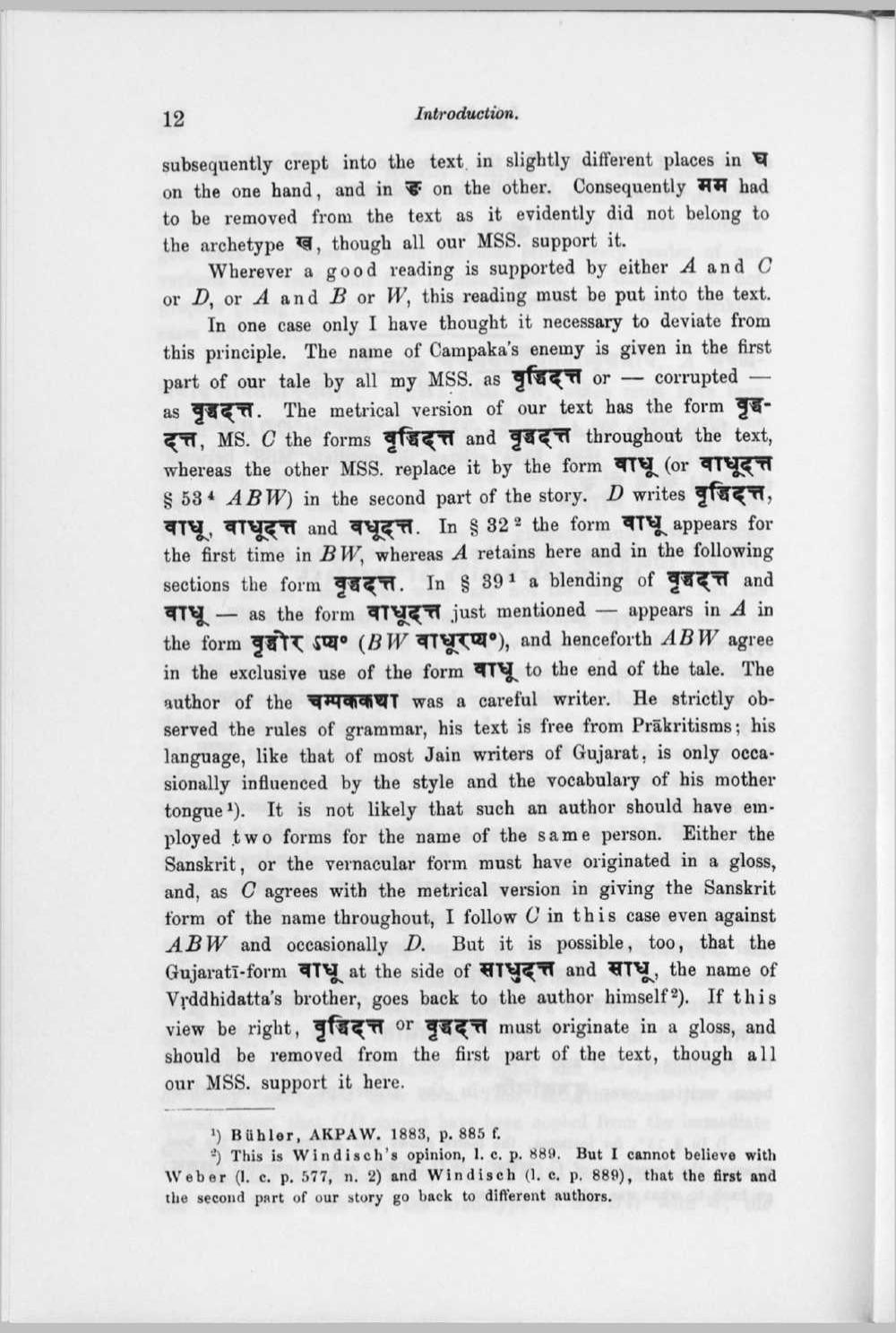________________
12
Introduction.
subsequently crept into the text in slightly different places in E on the one hand, and in on the other. Consequently A# had to be removed from the text as it evidently did not belong to the archetype C, though all our MSS. support it.
Wherever a good reading is supported by either A and C or D, or A and B or W, this reading must be put into the text.
In one case only I have thought it necessary to deviate from this principle. The name of Campaka's enemy is given in the first part of our tale by all my MSS. as gta or -- corrupted – as वृद्धदत्त. The metrical version of our text has the form वृद्धदत्त, MS. C the forms वृद्धिदत्त and वृद्धदत्त throughout the text, whereas the other MSS. replace it by the form वाधू (or वाधूदत्त $ 53* ABW) in the second part of the story. D writes afect, वाधू, वाधूदत्त and वधूदत्त. In 8 32 2 the form वाधू appears for the first time in BW, whereas A retains here and in the following sections the form Em. In 391 a blending of quę and
atŲ - as the form TUZT just mentioned - appears in A in the form वृद्धोर प्य° (BW वाधूरप्य°), and henceforth ABW agree in the exclusive use of the form aty to the end of the tale. The author of the UT was a careful writer. He strictly observed the rules of grammar, his text is free from Prākritisms; his language, like that of most Jain writers of Gujarat, is only occasionally influenced by the style and the vocabulary of his mother tongue). It is not likely that such an author should have employed two forms for the name of the same person. Either the Sanskrit, or the vernacular form must have originated in a gloss, and, as agrees with the metrical version in giving the Sanskrit form of the name throughout, I follow C in this case even against ABW and occasionally D. But it is possible, too, that the Gujarati-form वाधू at the side of साधुदत्त and साधू, the name of Vyddhidatta's brother, goes back to the author himself?). If this view be right, gfect or 757 must originate in a gloss, and should be removed from the first part of the text, though all our MSS. support it here.
1) Bühler, AKPAW. 1883, p. 885 f.
9 This is Windisch's opinion, 1. c. p. 889. But I cannot believe with Weber (1. c. p. 577, n. 2) and Windisch (1. c. p. 889), that the first and the second part of our story go back to different authors.




